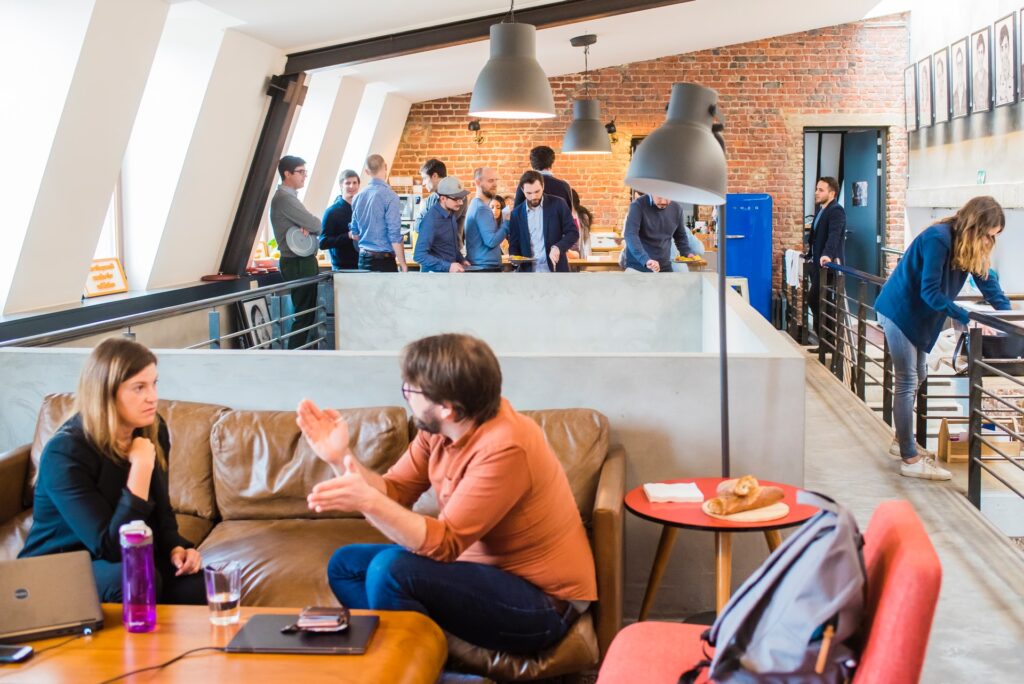
An ever-increasing number of leaders from the private sector are vowing to support climate action in a context in which ecosystems and people alike are severely affected. The effects are quite notable. Companies plan for climate change, making proactive investments, and supporting government policy initiatives. Employees that adopt sustainable practices are more productive as compared to those that don’t and this can be explained by the level of happiness within the workplace. Staff members are motivated to do more and give full effort.
These days, the focus is on the role of organizational leaders when, in fact, everyone bears responsibility for climate change. Environmental and societal concerns should be integrated into the business model. So, how can you engage employees on sustainability? Staff members play a vital role in transforming the company’s sustainability strategy into reality, which is why it’s necessary to increase employee engagement. This article proposes a few action plans.
1. Build the skills and knowledge that are vital to attaining sustainable development

Education represents the basis of human progress because it makes it possible for people to live better lives for themselves. If the members within your organization lack the necessary skills and knowledge for sustainable development, invest in their education. Educate professionals across all levels to enable meaningful business reform, as numerous sustainability initiatives require specialized knowledge and expertise. It’s important to concentrate on topics such as sustainability challenges and opportunities, the regulatory environment, and internal policy, not to mention ways to alter the business approach.
Starbucks collaborated with Arizona State University on the Greener Apron Program, providing online training to employees. You too can seek collaboration with a higher education institution. If not, you should at least hire a sustainability trainer who can develop and deliver training programs in an efficient and cost-effective manner. Employees should develop a can-do attitude, which opens up new opportunities. Climate change needs to be faced with a positive attitude, which translates into mobilization. Positivity always provides a return on the investment.
2. Remind employees that actions speak louder than words

People look up to leaders when they don’t know what to do. This is because they don’t want their efforts to go to waste on certain tasks. When you lead by example, you create a picture of what’s possible. Not only will employees respect and endorse your behavior but also they will follow your example. If you want to get people to care more about the planet and adopt environmentally-friendly behaviors, inspire them to do so. Be mindful of what you do and say. Most importantly, you should always show support for the team. If someone requires extra guidance, make sure to help them between closed doors.
Group activities are a great way to show people that you’re completely mindful of sustainability. Plant trees with your company or bring your own food to work to encourage employees to reduce waste. Food delivery, in particular, creates a lot of waste because of the containers and added CO2 emissions. In Belgium, food waste amounts to roughly 10,000 tons per day. If you have recyclable materials, you need a baler. Therefore, corporations invest in different baling machines for recyclables.
Gather staff members and show them the number of containers that are disposed of after a week of eating sandwiches. Companies like Miltek offer some very good options for that.
The fact is that leadership is a process in which the behavior and attitudes of one person shine through. People within your organization need to see what lies ahead of the road and how they should act to accommodate the change. Each and every person is constrained by the culture of the organization they are part of.
3. Incorporate sustainability into everyday work

Companies like Ikea and Apple, which are the most successful ones in the world, don’t limit themselves to the requirements of government regulations when it comes to finding eco-friendly solutions to unsustainable business practices. While the former is deploying ocean-bound plastics to manufacture sustainable products, the latter is taking advantage of green energy. Sustainability needs to be incorporated into everyday operations. Integrate innovation-related sustainability plans and encourage customers to purchase environmentally-friendly products. Millennial shoppers, in particular, don’t care about price. What they’re interested in are features and locally-sourced products.
It’s important to deploy evidence-based data to make informed decisions within your company. There’s no single roadmap to take regarding sustainability. A lot can be done to get employees on board and it all depends on strategy, communication, facilitation, and motivation. The biggest challenge of all is to find new ways of engaging staff members towards sustainability. Even the best plans lose their effectiveness with time, which is why it’s necessary to be creative in your approach. Work towards changes in the organization and the local community. You can make the world a better place, hard as it may be to believe.
4. Turn your rival into your partner

You can make a business case for sustainability not by using statistical analyses, but by persuading other people to join in on the effort. To be more precise, consider striking a partnership with one of your rivals. We can all remember the times when fierce commercial rivals started to collaborate. Pepsi, Nestle, and Coca-Cola came together for the Consumer Goods Forum, which encourages the global adoption of practices and standards that serve consumer goods. If you work together with your rivals, you can achieve greater results because you can share resources and improve visibility.
Employees will be proud to represent the company they’re working for. And they won’t be disengaged in their jobs. So, don’t promote a strong sense of sustainability ownership. It should be everyone’s responsibility. It’s about changing mindset and behavior to reduce consumption and control emissions. As you’re trying to find ways to shape the future of your organization, having engaged staff members can go a long way in achieving your goal. Everyone has to contribute to the movement, not just CEOs, take a look at this to guide to understanding EOT. It takes incredible power to move ownership for engagement, but you can do it.







